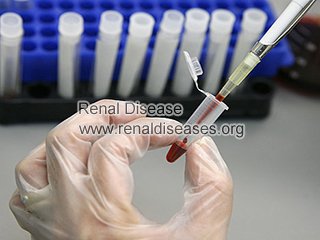Whatsapp: +8615512139310
- Email us:
 PKD, abbreviation for Polycystic Kidney Disease, refers to an illness condition featured by fluid-filled sac on both of the kidneys. Here, we will introduce the common tests for this genetic disorder in detail.
PKD, abbreviation for Polycystic Kidney Disease, refers to an illness condition featured by fluid-filled sac on both of the kidneys. Here, we will introduce the common tests for this genetic disorder in detail.
Blood test
As an important index to measure how your kidney work, creatinine level can be kept at a normal range. And the normal value is 0.5-1.2mg/dL. When elevated creatinine level occurs, approximately half of kidney function have been lost.
In addition to creatinine, blood urea nitrogen can also be used to measure kidney function, which refers to by-product of dietary protein. Different factors can affect the BUN level, such as, protein intake, fluid status, heart failure. And the reasonable value for BUN is 6-15mg/dL.
Urine test
If there are large amounts of WBCs in urine, the possibility of presenting urinary tract infection is increased. In the condition, a urine culture is needed to figure out the exact type of bacteria in urine.
If there are too much RBCs in urine,the color or urine can be pink, red or brown.
According to the statistics, about 33% ADPKD patients can be detected with proteinuria. And the amount is usually less than 1g.
In some cases, patients will combine 24h urine collection and creatinine test to determine the eGFR level.
CT Scan
CT Scan is a sophisticated form of X-ray. Mostly, it uses radiation and contrast dye to observe the organs. And it is very helpful to find out kidney stones and other abnormal signs.
MRI
With the help of magnet, magnetic resonance imaging technique can help take pictures of the body. During the course, contrast dye and radiation are not needed. Besides, it will not do harm to the human body.
After the above introduction, we hope PKD patients can learn more about the physical conditions and make right choices. For detailed information, please leave us a message below.